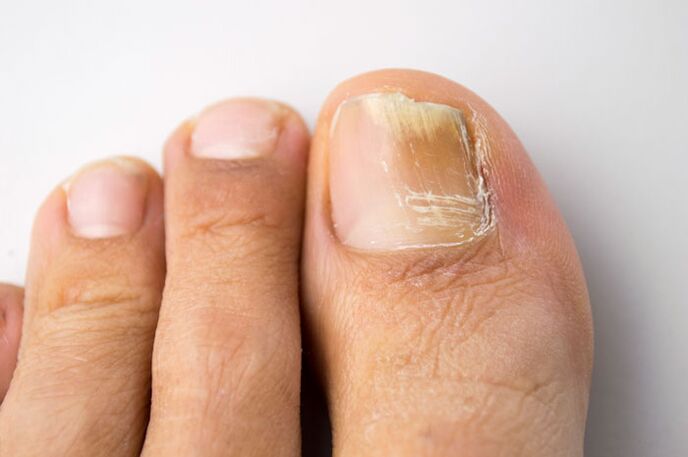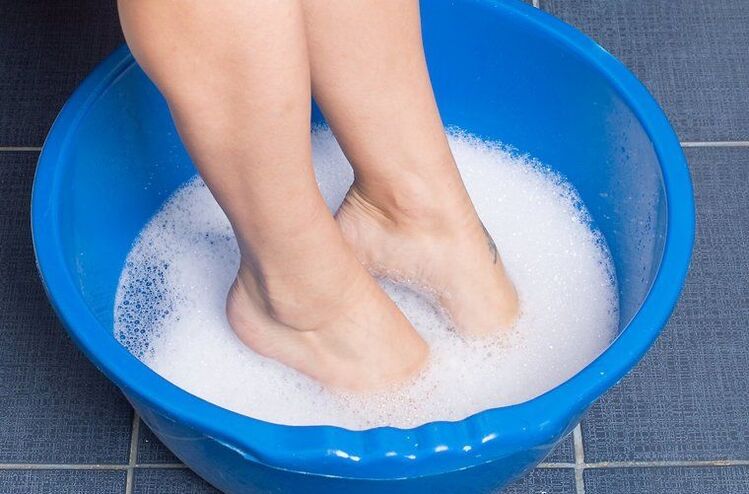If your nail plate has a fungal infection or onychomycosis, you should contact a dermatologist or mycologist. The first doctor specialized in any skin problem. His abilities are allergic, bacterial, viral and fungal lesions of the epidermis. Mycologists are narrowly qualified specialists. He understands all types of fungi, treats fungal lesions of any location, conducts research work and collects statistics.
When you need medical help
A person becomes infected with the fungus when the spores of the fungus get onto the skin or nail plates. You can "catch" pathogenic microorganisms in public places (saunas, swimming pools, beauty salons), in your own family members, in shoe stores. Fungi are very fond of moist and warm environments. They are able to breed in shoes. Most of the time this happens if a person has sweaty feet, ignoring this fact or ignoring the rules of personal hygiene.

A person is not always infected when they come into contact with the fungus. This was preceded by a weakened immune system. Typically, the body successfully responds to the attack of billions of microbes every day. If your defenses are depleted, you could be in trouble.
Onychomycosis is a serious infectious disease. With it, a person can have prolonged exposure to pathogenic fungi. Toxic mycotoxins entered his body. It can also negatively affect the immune system. Get rid of nail fungus as soon as possible. The longer a person lives with the infection, the more difficult and time-consuming it is to treat. Introduced onychomycosis is difficult to cure and becomes chronic, recurring, requiring lifelong use of preventative agents.
It is necessary to contact a doctor when the first signs of nail fungus appear, namely:
- if they are covered with small spots, dots, streaks, pale inclusions;
- if the colour of the nail plate has changed - it has turned yellow, brown, grey or green;
- Incorrectly clipped nails can create an "entrance" of infection if the board grows inside;
- If the nails fall off - signs of progression of onychomycosis;
- if a person has ringworm - the fungus can easily spread from the skin to the nails;
- If a family member has onychomycosis;
- If the nails lose their luster, they become dull.

The immediate cause of a visit to the doctor is itchy, sweaty, dry skin on the feet. Excessive sweating and unpleasant foot odor can be described as fungal development.
who goes first
After deciding to see a doctor, you should first make an appointment with a dermatologist. All paid and free hospitals have skin specialists. You can make an appointment with a dermatologist for free at a skin care center where you live.
A dermatologist will perform a visual inspection - to identify signs of fungal development and to check the skin for other symptoms of fungal lesions on the body. Often, a doctor will prescribe a test (scraped from the nail or skin) to confirm or refute the fungal disease.
If the expert's suspicions are confirmed, additional tests - general biochemical studies of blood, urine, and liver tests - may be prescribed. More information is needed to determine the cause of infection to detect all possible comorbidities. Blood and liver disease limit the use of certain medicines.
Referral for consultation with mycologist in advanced cases - if all toenails are damaged by onychomycosis, the process of onychomycosis (disruption of the plate) has begun, some nails have been lost, and the patient has not been successfully self-medicated before. A narrow expert will prescribe additional tests to identify the type of pathogen. Certain drugs are more effective against certain types of fungi.
General principles for eliminating onychomycosis
For the treatment of nail mycosis, specialists may prescribe several drugs at the same time. in:
- Systemic antifungal agents;
- Dosage forms for local action;
- vitamin preparations;
- Immunostimulants.
The doctor will individually assess the patient's lifestyle and hygiene culture. If necessary, he will make appropriate recommendations to reduce the duration of treatment.
Medical treatment should be very strict. The patient must take oral medication on time and strictly adhere to the conditions of treatment recommended by the doctor. Use local remedies until the problem is completely eliminated. Usually, continue use for 1-2 months after onychomycosis symptoms disappear. The following are prescribed as topical preparations:
- varnish;
- gel;
- ointment;
- solution.

As an auxiliary method, it is recommended to use a water-salt bath, remove the plate with the help of a special softening ointment, and occasionally require surgical assistance.
Immune stimulants and vitamins were selected based on biochemical analysis results. In some cases, nail fungus is the first sign of serious disease in the visceral or hematopoietic system.
Don't throw away your doctor's phone number immediately after your first visit. The success of onychomycosis treatment depends on the control of the healing process. During the course of treatment (up to 1 year), the doctor will consult and test several times. After one month of full recovery, the replaced nail plate must be taken again as soon as it regenerates. In order not to complicate the treatment process, the patient should refuse decorative varnishes, nail extensions.

























